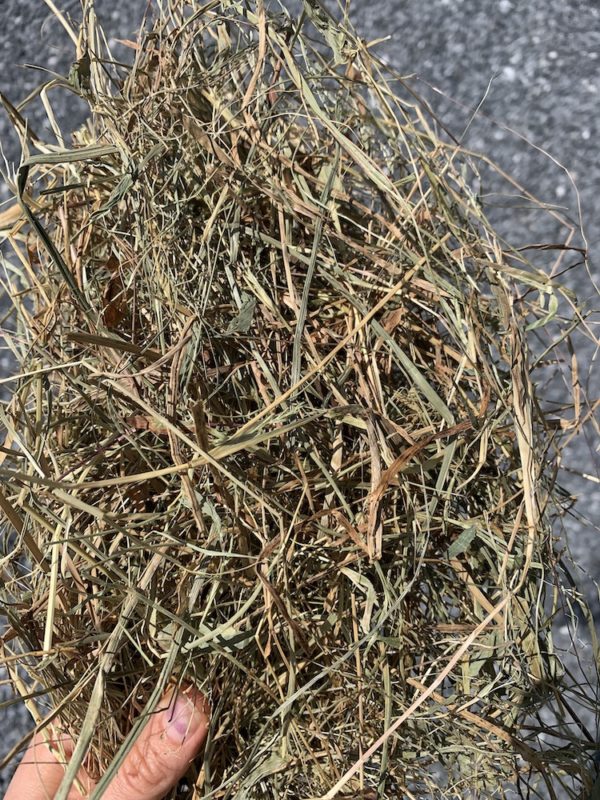
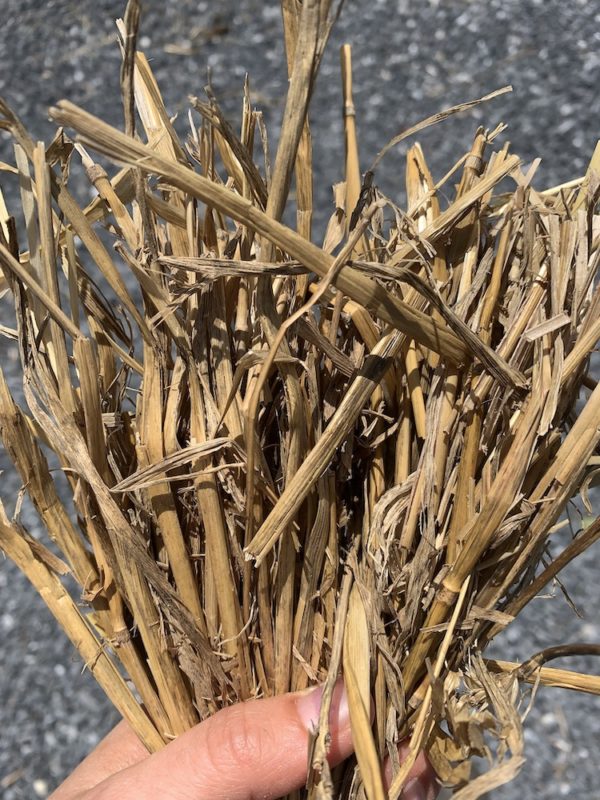
The words “hay” and “straw” come up a lot when talking about the care of certain farmed animalA species or specific breed of animal that is raised by humans for the use of their bodies or what comes from their bodies. species, but what exactly these words mean is sometimes misunderstood. While hay and straw are not the same things, the two words are often used interchangeably (a good example – more often than not, those hay rides are actually straw rides). Because of the important role straw and hay play in the care of certain species, and because inadvertently using one in place of the other can result in problems, it’s important to understand what hay and straw are and how they are typically used.
What Is Hay?
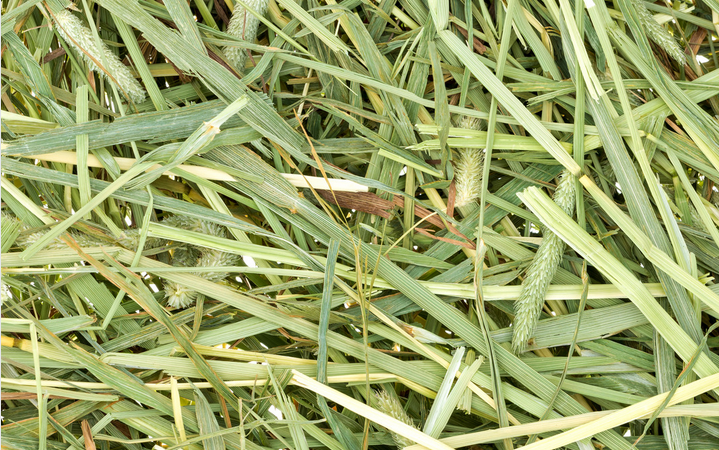
The word hay (when used by a source that understands the difference between hay and straw) will most often come up when discussing feeding animals, particularly ruminants, equines, and small mammals like rabbits and cavies. While definitions vary (and some definitions add to the confusion between hay and straw), here’s how The National Forage and Grasslands Curriculum defines hay: “Grass or other plants, such as clover or alfalfa, cut and dried for [animal food].”
While the primary purpose of hay is animal food, poor-quality hay is sometimes presented as an option for animal bedding. We do not recommend this practice for a few reasons. First, unlike straw, hay begins to decompose quickly and produces an odor once soiled. Second, when it comes to feeding hay to residents, we typically recommend the use of species-appropriate hay feeders in order to prevent residents from urinating or defecating on hay (and to reduce their risk of certain diseases). Using hay as bedding could result in residents eating soiled hay, which defeats the purpose of using appropriate feeders.
Types Of Hay
There are many different plants that can be harvested for hay, such as timothy, alfalfa, teff, and orchardgrass, with different varieties being more or less readily available in different regions/climates. Broadly speaking, hay is often categorized as grass (ex. timothy, orchard, teff), legume (ex. alfalfa, clover), or a mix of grasses and legumes. The most appropriate type of hay for your residents will depend on their species as well as individual factors such as age and overall health. You can read more about general diet recommendations for different species in our daily diet resources.
Cutting
In addition to different varieties of hay, it also comes in different cuttings, which refers to when in the season hay was harvested (cut) – first cutting was harvested first, second cutting is harvested second, and so on. You may find that there are physical and nutritional differences between cuttings. This tends to be due to the maturity of the plant when harvested.
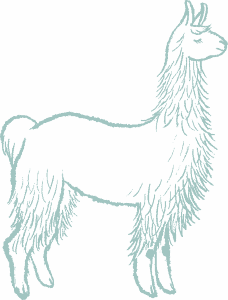
Hay Testing
Speaking of nutritional differences, you can have your hay analyzed to determine its nutritional makeup. Your veterinarian or local cooperative extension office should be able to guide you through this process.
What Is Straw?
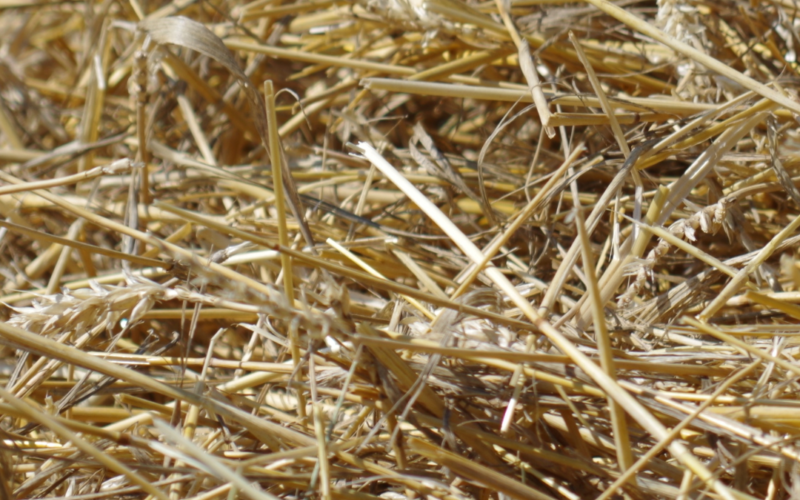
Straw is the dry by-product of cereal grains. While straw has many uses, in animal care contexts, it is most often used as bedding, not food (though, depending on the species you care for, it may not be the best bedding option). One notable exception to the “straw is bedding, not food” rule is donkeys who may do best on a diet consisting primarily of straw (though not all types of straw are appropriate for donkeys).
Types Of Straw
Like hay, there are various types of straw, including wheat, oat, rye, barley, and rice, and their availability will vary by region. When considering straw as bedding, be aware that different types of straw will have different characteristics in terms of absorbency, softness, and the traction they provide.
Differentiating Between Hay And Straw
Understanding that hay and straw are different is important, but, particularly if you are going to be using both hay and straw at your sanctuary, you also need to be able to tell the difference when looking at the two. As for those pictures at the start of this resource – that’s hay on the left and straw on the right. It’s not uncommon for a new caregiverSomeone who provides daily care, specifically for animal residents at an animal sanctuary, shelter, or rescue. to inadvertently bed down a living spaceThe indoor or outdoor area where an animal resident lives, eats, and rests. with hay or fill a resident’s hay rack with straw, so let’s consider some of the physical differences between the two. Please note that we are going to be doing some serious generalizing here as different types of hay and straw are going to look different from other varieties.
Color– While the color of both straw and hay can vary, straw is typically a yellow or golden color, and hay is typically a shade of green. It’s important to consider that if hay has been bleached by the sun, it will often become yellow. If an intact bale has been sun-bleached, the exposed hay will be yellow, but the interior is often still green(ish).
Weight– If you pick up a straw and hay bale that are the same size, you’ll typically find that the straw bale is lighter in weight.
Smell– While straw is not odorless, when comparing the two, hay should have a more noticeably sweet smell.
Now let’s look at a few more examples. Despite the color variations, the following pictures are all hay…



Whereas the next pictures are all of straw…



We recommend you familiarize yourself with what the types of hay and straw you use look, smell, and feel like so that you can tell the two apart and can teach others to do so as well. In general, it’s a good idea to examine incoming hay and straw orders since appearance may change from harvest to harvest. In addition to examining hay to ensure you know its physical characteristics, an inspection of the hay can help you identify potential issues such as mold or, particularly in alfalfa hay, blister beetles which can contaminate hay with the toxic substance cantharidin.
To further assist everyone in differentiating between hay and straw, it’s helpful to have designated storage areas to make it less likely that the two will be confused. For example, even if both are stored in the same building, consistently storing hay on one side and straw on the other can make it easier to differentiate between the two.

Shared Safety Issues
Both straw and hay bales are held together with baling material such as twine or wire. Be sure to remove all baling materials when bales are opened to prevent residents from ingesting or becoming tangled in them!
There are also fire safety issues associated with straw and hay. When baled with a high moisture content, hay (and to a lesser degree, straw) can heat and spontaneously combust! Additionally, both hay and straw will act as fuel for a fire. For these reasons, we recommend storing large quantities of straw or hay in structures that do not also house residents whenever possible.
There you have it. Straw is straw, and hay is hay. While the average person will likely continue to use “straw” and “hay” interchangeably in conversation, when it comes to animal care contexts, it’s important to know the difference.
SOURCES:
Define Forages And Differentiate Between Forage Types | National Forage & Grasslands Curriculum
Which Cutting Of Timothy Is Better For Horses? | Anderson Hay
Choose The Right Hay For Your Horses | Montana State University
What’s the difference between hay and straw? | NewsWise
Preventing Fires in Baled Hay and Straw | Ag Safety And Health
All About Hay | Master Feeds (Non-Compassionate Source)
Bedding Options For LivestockAnother term for farmed animals; different regions of the world specify different species of farmed animals as “livestock”. And Equines | U Mass Extension (Non-Compassionate Source)
Housing For Sheep | Sheep 201 (Non-Compassionate Source)
Non-Compassionate Source?
If a source includes the (Non-Compassionate Source) tag, it means that we do not endorse that particular source’s views about animals, even if some of their insights are valuable from a care perspective. See a more detailed explanation here.








